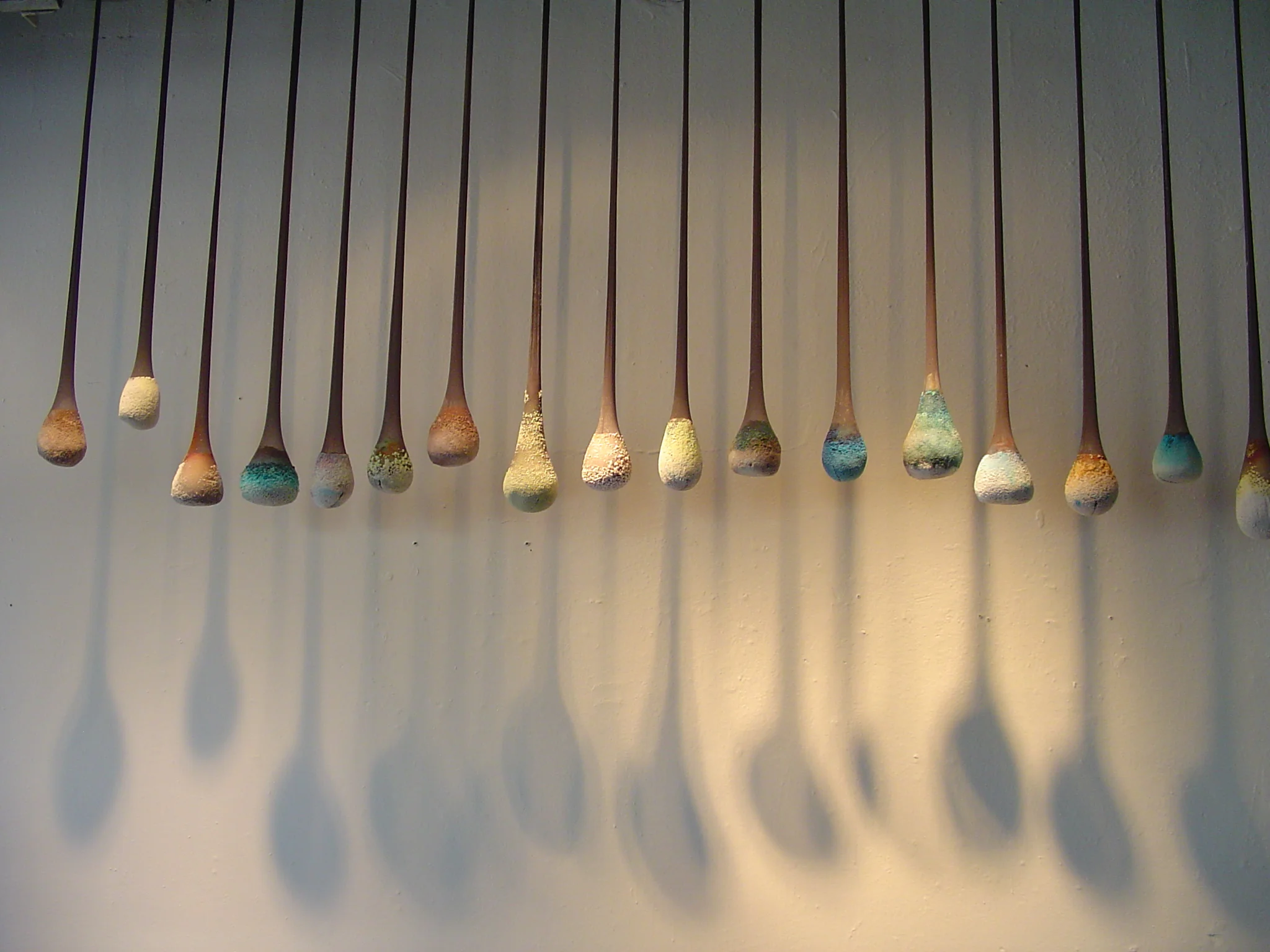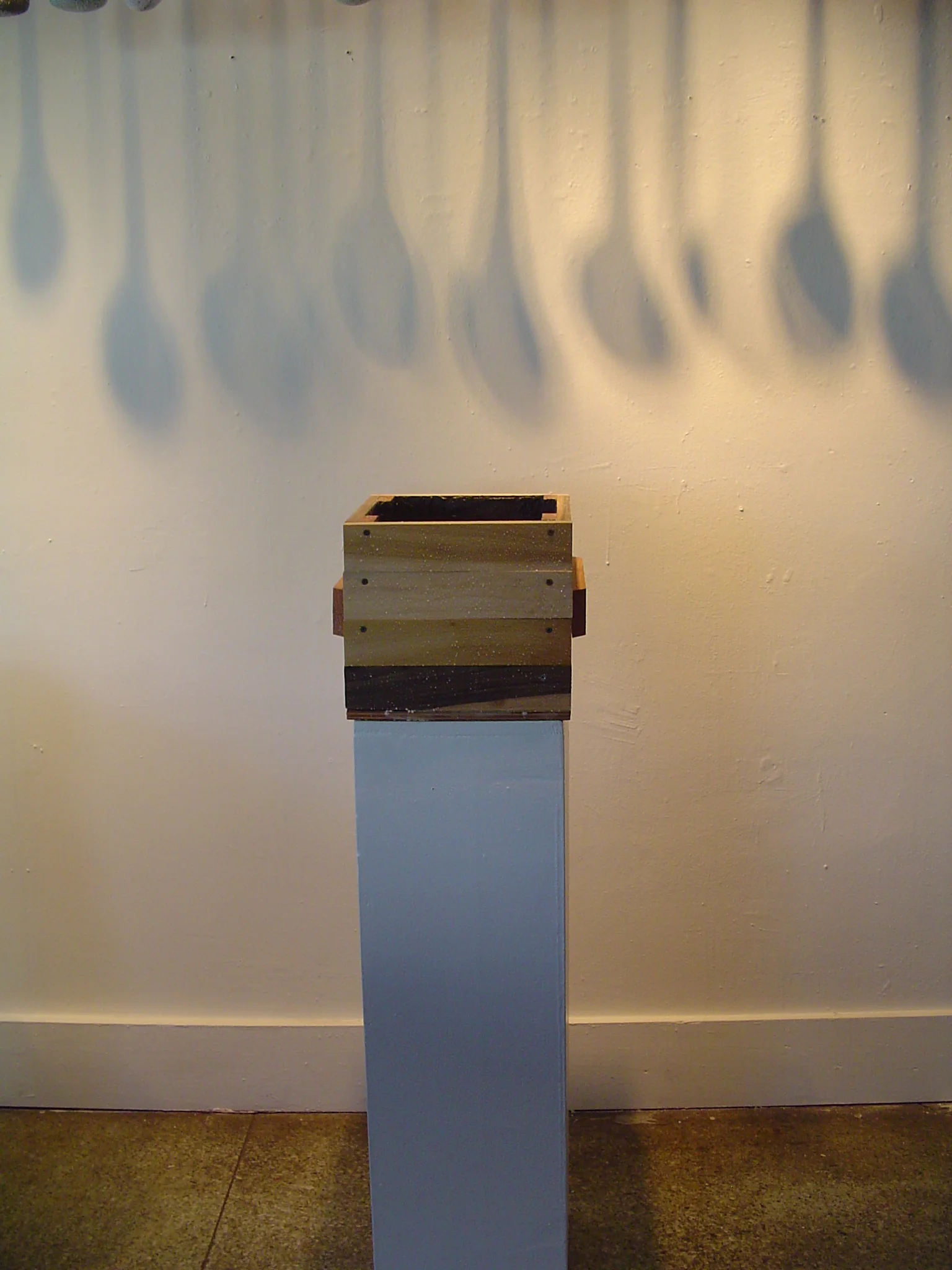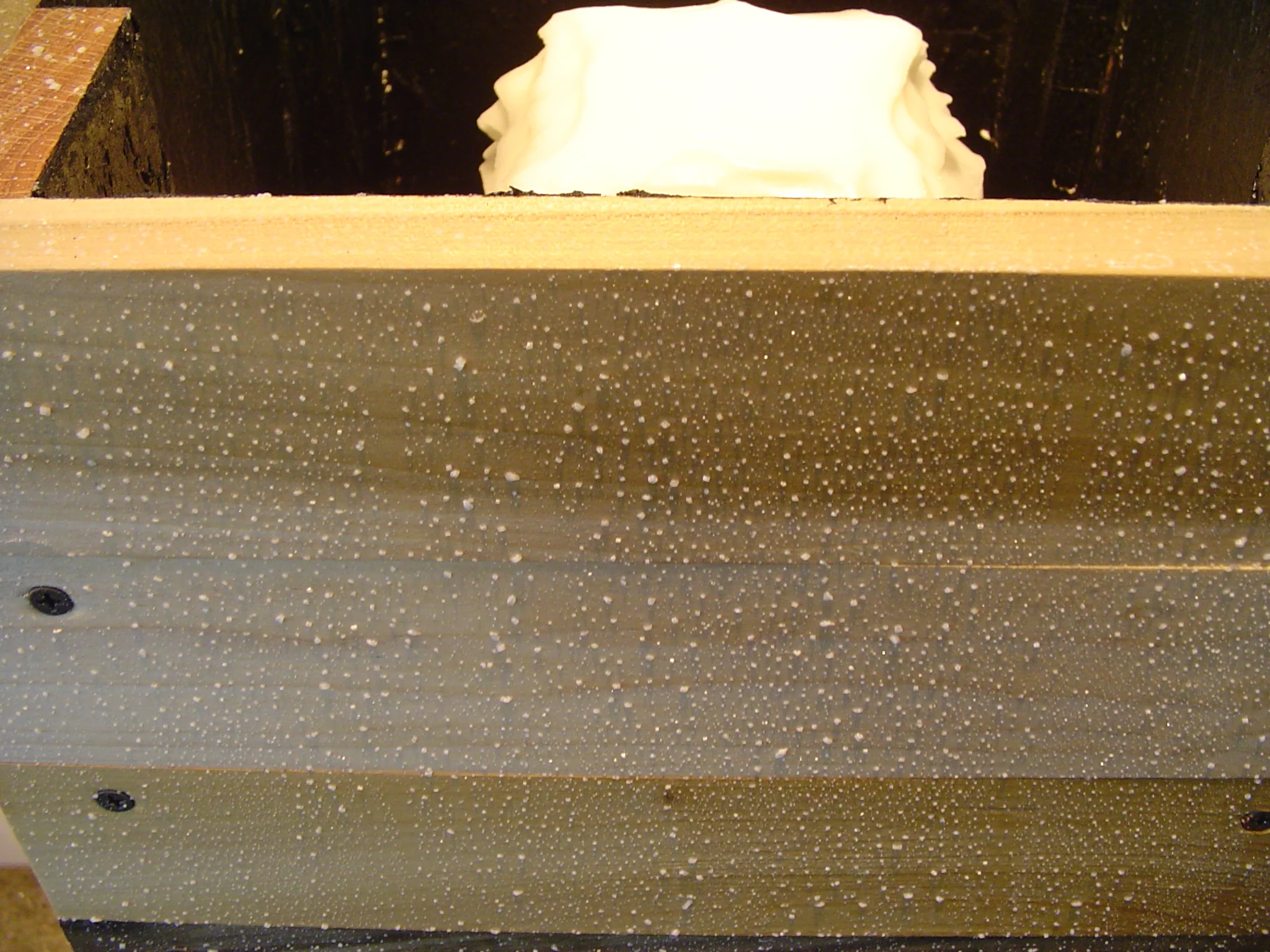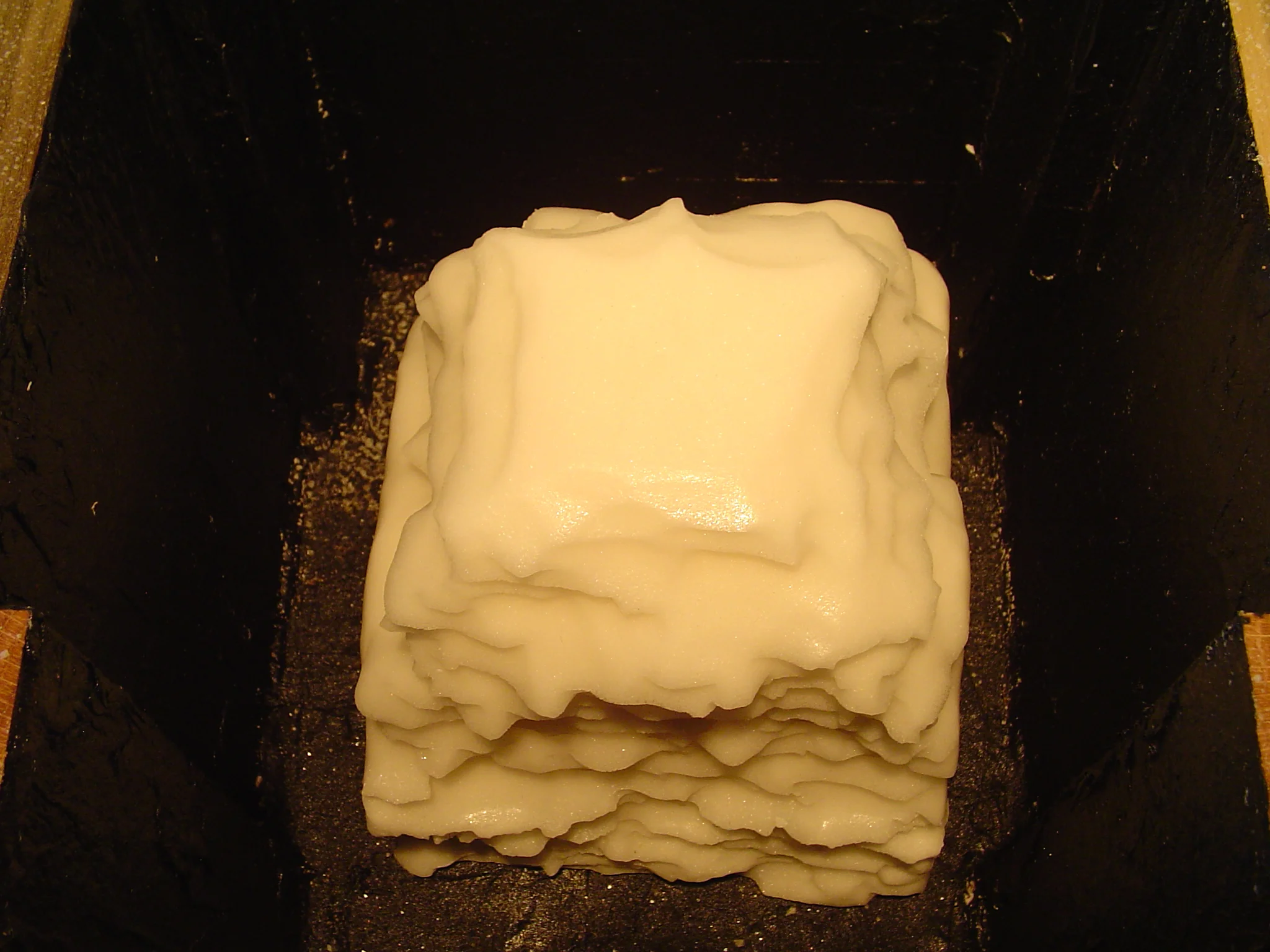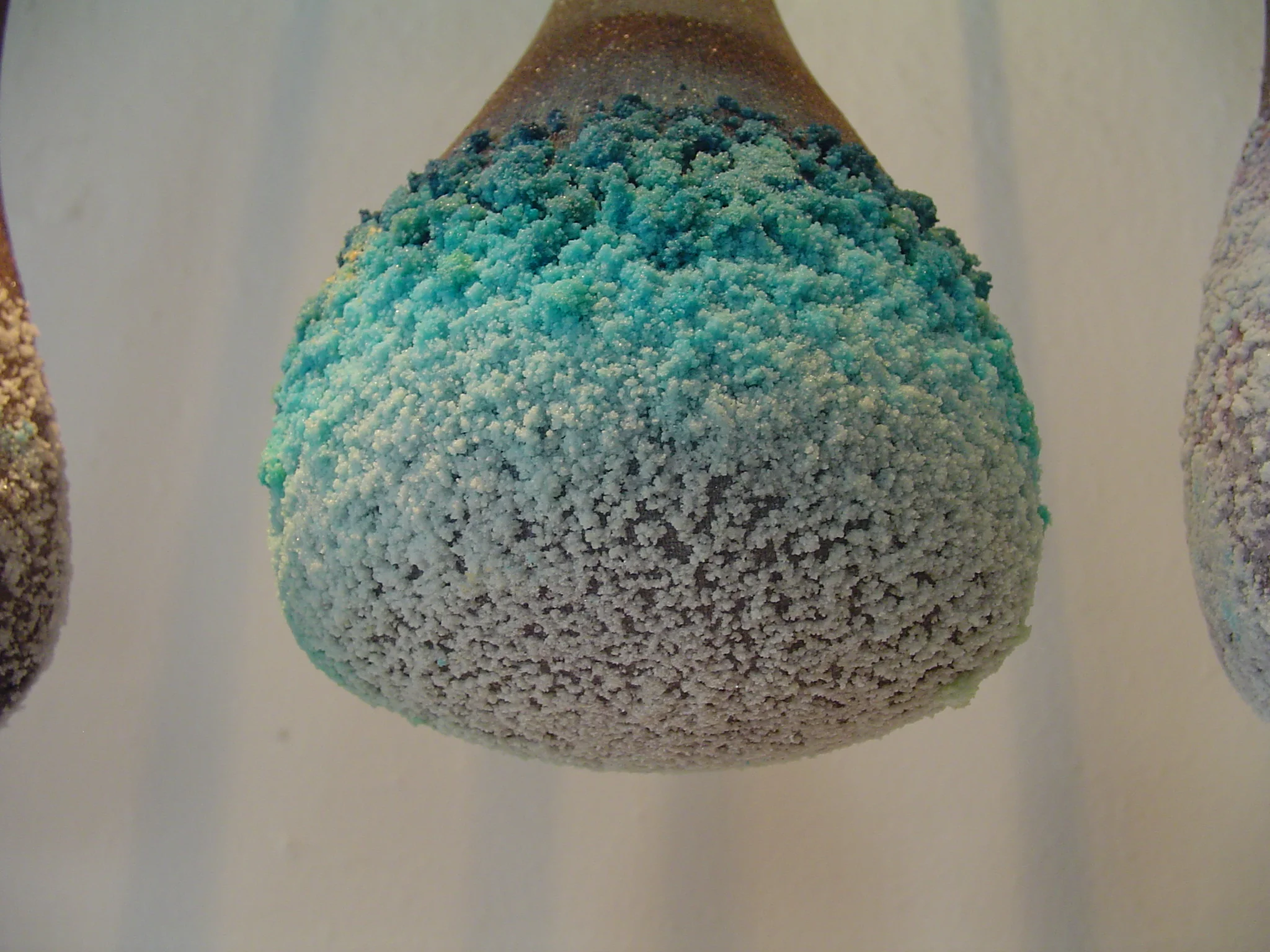Artist Statement
Chandeliers
Many of my processes are intended to be both destructive and constructive. This relates to my ideas of what a human body goes through in its processes. I have done work that lets me witness decomposition first hand and the subsequent regrowth becomes the focus. The re-growth of the salt crystals after their previous form has been destroyed is a balance to the destruction that the salt causes.
I came across ceramics late in my art education. I fell in love with the nature of the material being grounded in sheer manual manipulation. It also has a long history rooted in many different areas, from very practical and functional objects, to architectural forms, to ideas of sheer extravagance like porcelains. The clay was a great fit for a symbiotic relationship with the salt. The salt is applied to the ceramic material and breaks down the clay body from the inside out; much like cancer does to a human. The clay can also be a vehicle for new growth. Salt can permeate the entire clay body and pass through, causing the salt to change its crystalline make up. The salt that passes through the clay is thus transformed by the experience. The clay also has multiple variations, which produce different results. Bisque ware and green ware form different bases for growth and decay. The bisque ware is very strong at first but over a long period of time, the body slowly breaks down and flakes away. The unfired clay is much quicker with its changes. Drying and cracking happens suddenly and the clay is ravaged in a much more abrupt way. Soaking from the inside out is a process that is very useful in my endeavors. After building a base of knowledge of my materials, I sought to add more layers to the content to give the viewer and myself more to dive into. Using the ceramic as a base for the salt to process much like death processes a body, I built objects that are living and dying at the same time. The form of the objects then became more important as a tool to not only bring the viewer in to witness the stages of change, but to give a secondary stream of content to the process.
I believed the first chandelier to be successful in some ways, but fail in many others. The object was too much like a familiar chandelier. Since I was more interested in processes of the body changing and not a chandelier decaying, I started to make the next object less like a chandelier, and more like a body part. In the next pieces of work, chandelier arms reaching out into space seemed more like outstretched fingers or appendages seeking life or giving in to the process of death. With each passing object the form of the ceramic understructure became more and more organic and flowing. Crystals and glass give way to entrails of salt stockings and burn marks in the salt. Symmetry gives way to heavy swollen ends of torso or bits of fingernails.
White gave way to spills of color alluding to red blood, blue veins and yellow bile. Urine, dead skin, flaking, ripping, bursting. Arms reaching out but not moving. The salt is body and the body is salt.
Link to Interview for Tampa Review TAMPA REVIEW


